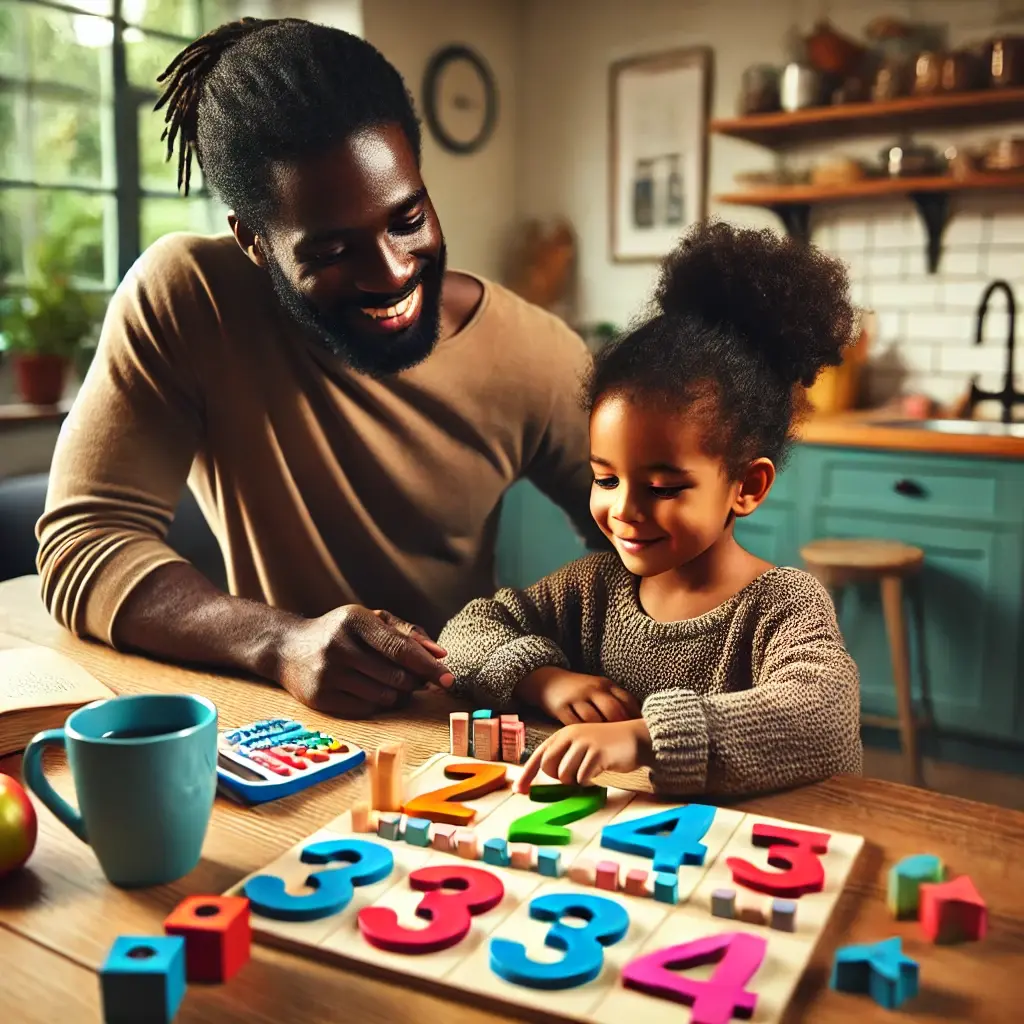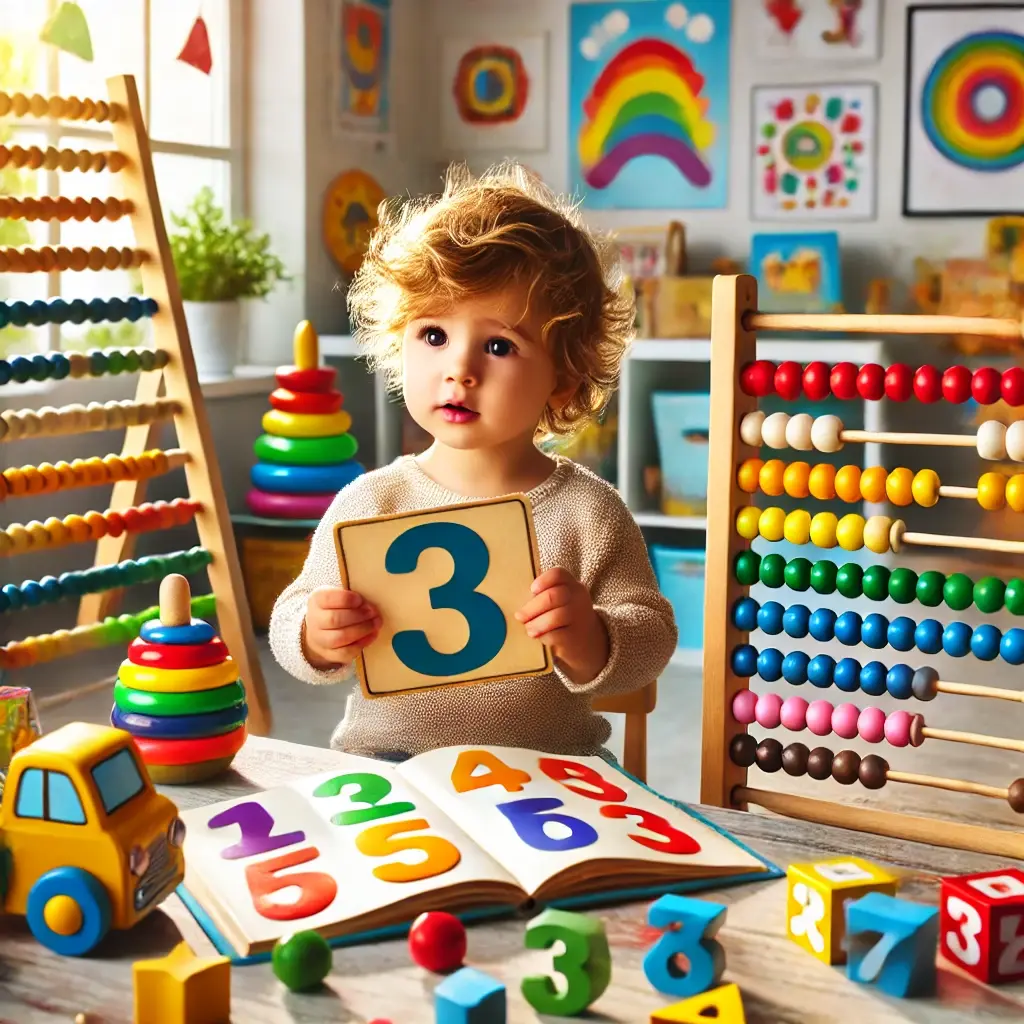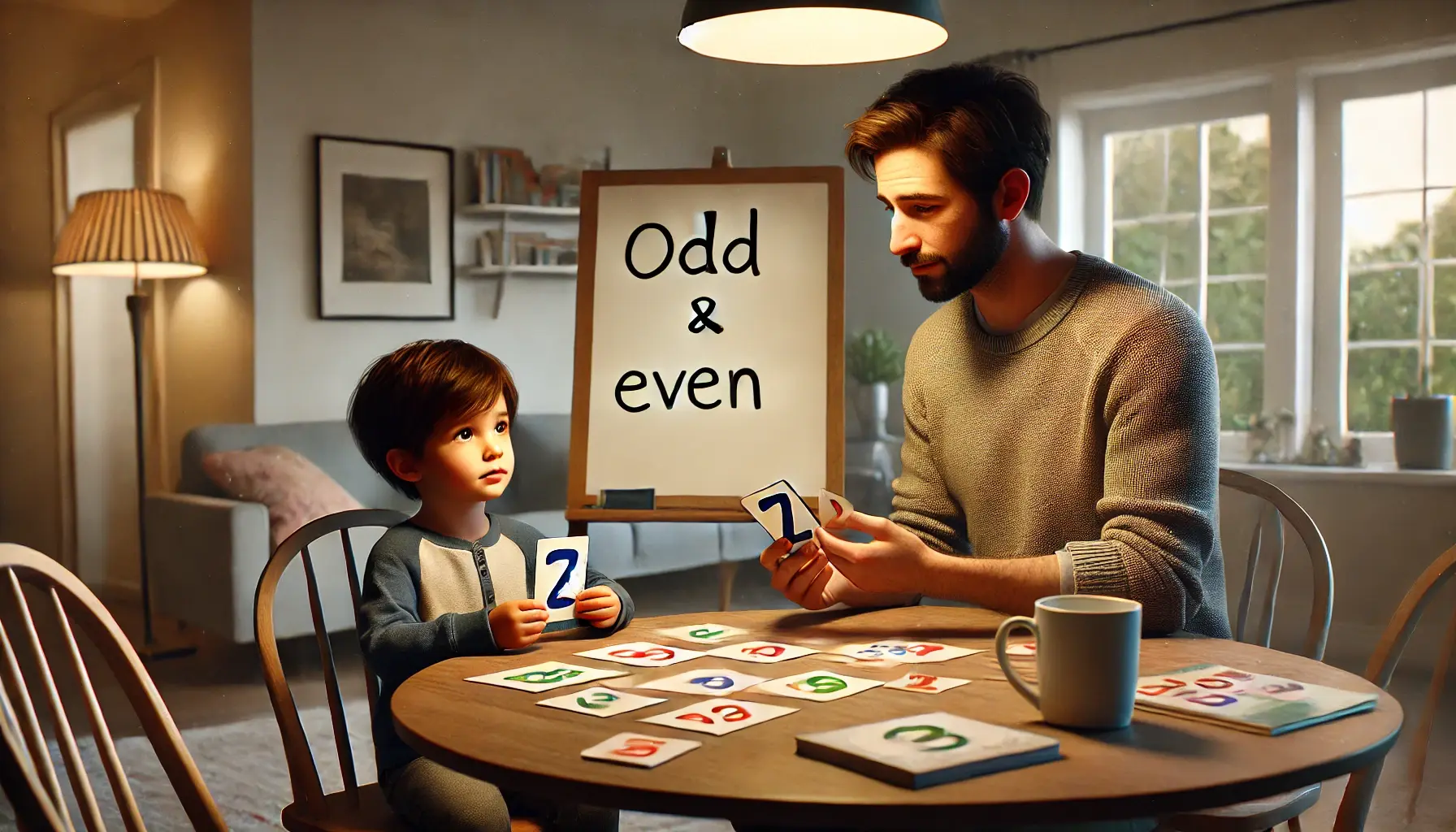
Your child has completed kindergarten and is now starting 1st grade—a new step in their education. This year, they’ll begin to explore math in a more structured way, moving beyond simple counting and into a world of numbers, shapes, and basic arithmetic. In 1st grade, your child will learn to recognize and write numbers up to 100, understand the basics of addition and subtraction, and start to grasp the concept of place value. They’ll also be introduced to simple geometry, learn to identify shapes and understand their properties, and begin to explore measurement and time.
These basic skills are really important because they help your child get ready for more complex math in the future. By the end of 1st grade, your child will better understand math, setting them up for the challenges and learning that come next.
We’ve gathered a breakdown of what 1st graders learn in math and how these early lessons help them grow.
Why is Math Important?
Math is a fundamental skill that helps your child develop problem-solving, logical reasoning, and critical thinking abilities—essential for school and everyday life. As your child learns math, they start to see patterns, make connections, and confidently approach problems.
Early math education teaches your child to think logically, follow steps, and make decisions based on the information they have. It also encourages critical thinking, helping them analyze situations and develop creative solutions.
Math is not just about numbers; it's about helping us stay organized, learn new things, and share that knowledge with others. As students grow, they’ll find that math is a skill they’ll use throughout their lives, both personally and professionally. From musicians counting rhythms to accountants balancing books, from fashion designers creating patterns to parents managing household budgets—math is a tool that supports a wide range of careers and daily tasks.
Math Is All Around Us
Math isn’t just something we learn in school—it’s a part of our everyday lives, often in ways we might not even realize. From the moment we wake up to when we go to bed, math is all around us, helping us make sense of the world and accomplish everyday tasks.
Think about cooking, for example. You're using math when measuring ingredients for a recipe, whether it’s a cup of flour or a teaspoon of salt. Adjusting the recipe to serve more or fewer people? That’s math, too!
Shopping is another place where math comes into play. Whether counting change, comparing prices, or figuring out discounts, math helps you make smart decisions and stay within your budget. Even something as simple as making sure you get the right amount of change at the store involves basic math skills.
By recognizing how math is integrated into these everyday activities, children can start to see its relevance and value. It’s not just about solving problems on a worksheet—it’s a tool they’ll use throughout their lives.
8 Key Math Skills and Concepts For First Graders
1) Numbers And Counting

In 1st grade, children deepen their understanding of numbers and counting, building on what they learned in kindergarten. They will practice counting forwards and backward, not just from 1 to 10, but also to 100. They will also learn to recognize and write numbers correctly, understanding the order and sequence of numbers.
Place value is introduced at this stage, helping children understand that numbers comprise tens and ones. For example, they will learn that the number 42 comprises 4 tens and 2 ones. This concept is crucial because it forms the foundation before more complex math topics like addition and subtraction.
Additionally, 1st-grade students begin to compare numbers, learning concepts like greater than, less than, and equal to. This helps them develop a sense of magnitude and prepares them to solve simple math problems.
By the end of 1st grade, your child will have learned to:
- Count forward and backward up to 100.
- Recognize and write numbers up to 100.
- Understand and use place value with tens and ones.
- Compare numbers using terms like greater than, less than, and equal to.
- Order numbers in sequence.
2) Addition And Subtraction
In 1st grade, addition and subtraction become key focus areas as children begin to develop their basic arithmetic skills. Your child will start with simple addition and subtraction problems using numbers up to 20. They’ll practice adding and subtracting objects, fingers, or pictures to understand these concepts in a tangible way.
Students will also learn to solve word problems that involve addition and subtraction. These problems help them apply their math skills to real-world scenarios, improving their critical thinking and problem-solving abilities.
Throughout the year, your child will use various strategies, such as counting, using a number line, or breaking numbers apart (e.g., using 10 as a benchmark) to solve problems more efficiently.
By the end of 1st grade, your child will have learned to:
- Solve simple addition problems with numbers up to 20.
- Solve simple subtraction problems with numbers up to 20.
- Apply addition and subtraction skills to solve word problems.
- Understand the relationship between addition and subtraction.
- Use different strategies, like counting on or using a number line, to solve addition and subtraction problems.
3) Patterns and Sequences

In 1st grade, children are introduced to patterns and sequences, which are fundamental building blocks for later understanding more complex math concepts. Patterns are repeating sequences; your child will learn to identify what makes a pattern and what does not.
Through engaging activities, they will explore various patterns, such as AB, AAB, or ABC patterns, and learn to predict what comes next in a sequence. Completing a sequence helps them develop logical thinking and recognize order and repetition.
Additionally, your child will have the opportunity to create their patterns, which reinforces their understanding and allows them to express creativity within the boundaries of mathematical rules.
By the end of 1st grade, your child will have learned to:
- Identify and recognize different types of patterns.
- Distinguish between what is and isn’t a pattern.
- Complete a sequence by predicting what comes next.
- Create their own patterns using various elements like shapes, colors, or numbers.
- Understand the concept of repetition and order in sequences.
4) Geometry

In 1st grade math, your child will begin exploring geometry by learning about different types of shapes. They’ll start by identifying and naming common 2-dimensional (2D) shapes such as circles, squares, triangles, and rectangles. As part of this process, they’ll learn to count each shape's sides and corners (or vertices), which helps them better understand and differentiate between them.
After mastering 2D shapes, your child will be introduced to 3-dimensional (3D) shapes like cubes, spheres, cones, and cylinders. They’ll learn about the faces (the flat surfaces), edges (the lines where two faces meet), and vertices (the corners) of these 3D shapes. This introduction to 3D shapes helps to expand their understanding of the physical world around them as they begin to recognize these shapes in everyday objects.
Geometry at this level teaches children about shapes and lays the foundation for spatial reasoning and problem-solving skills, which are important in many areas of math and beyond.
By the end of 1st grade, your child will have learned to:
- Identify and name common 2D shapes like circles, squares, triangles, and rectangles.
- Count the sides and vertices of 2D shapes to aid in identification.
- Recognize and name 3D shapes such as cubes, spheres, cones, and cylinders.
- Understand the concepts of faces, edges, and vertices in 3D shapes.
- Apply their knowledge of shapes to recognize them in everyday objects.
5) Picture Word Problems
In 1st grade math, your child will start tackling word problems, which can often be challenging. To help make this process easier and more understandable, picture word problems are introduced. This approach encourages students to draw the objects described in the word problem, allowing them to visualize the scenario and better grasp what the problem is asking.
Drawing the problem out lets your child see the math in action, making it easier to solve. After creating the visual representation, they’ll write a number sentence corresponding to the problem. This helps them connect the visual elements with the numerical operations needed to find the solution.
Finally, your child will write down their final answer, completing the process of solving the word problem. This method strengthens their understanding of math concepts and enhances their problem-solving skills by breaking down the steps in a clear and manageable way.
By the end of 1st grade, your child will have learned to:
- Use drawings to visualize and solve word problems.
- Translate a word problem into a number sentence.
- Write down the final answer to a word problem.
- Develop a step-by-step approach to tackling math problems using visual and numerical methods.
6) Fractions
In 1st grade, your child will be introduced to the basic concept of fractions, a new and exciting part of their math learning journey. Fractions help students understand how a whole can be divided into equal parts. The lessons will begin by showing your child how to divide shapes into equal pieces, such as cutting a circle or square into halves or quarters.
To make this concept easier to grasp, the book will use shading to illustrate what a fraction looks like. For example, if a shape is divided into four equal parts, shading one of those parts helps your child see what 1/4 looks like. The exercises will provide plenty of practice with simple fractions like 1/4, 2/4, 3/4, and 4/4, helping your child understand that fractions represent parts of a whole.
This foundational understanding of fractions sets the stage for more complex math concepts in the future and helps your child develop an early appreciation for how parts make up a whole.
By the end of 1st grade, your child will have learned to:
- Understand the concept of fractions as parts of a whole.
- Divide shapes into equal parts to represent simple fractions.
- Recognize and work with basic fractions like 1/4, 2/4, 3/4, and 4/4.
- Use shading to visualize and identify different fractions.
7) Telling Time and Time Word Problems

In 1st grade, your child will begin learning the basics of telling time, an essential life skill to help them understand daily routines and schedules. The lessons will start with images of clocks, including analog and digital, to help your child become familiar with different ways of displaying time.
Through practice, your child will learn to recognize and understand the hour hand, minute hand, and seconds hand on an analog clock. They’ll be guided to read the time correctly, focusing on the hour and half-hour marks and gradually moving towards more precise times.
To reinforce their understanding, the book includes time-related word problems that challenge your child to apply what they’ve learned. These problems might involve adding or subtracting time, helping your child grasp how time moves forward and backward on a clock. By working through these exercises, your child will develop a solid foundation in telling time and solving basic time-related problems.
By the end of 1st grade, your child will have learned to:
- Read and tell time using both analog and digital clocks.
- Identify and understand the hour, minute, and seconds hands on an analog clock.
- Solve simple time-related word problems involving addition and subtraction.
- Develop a basic understanding of how time is measured and how clocks work.
8) Measurement & Data
In 1st grade, your child will learn the basics of measurement and data, which are key to understanding everyday concepts.
Measurement:
Your child will start by measuring objects using non-standard units like blocks or paper clips and gradually move to standard units such as inches and centimeters. They’ll learn to compare the length, height, and weight of different items, developing an understanding of terms like longer/shorter and heavier/lighter.
Data:
Your child will also begin working with data, learning to collect, organize, and interpret information. Through activities like counting objects or recording weather, they’ll use charts and graphs to see patterns and relationships in the data.
By the end of 1st grade, your child will have learned to:
- Measure objects with non-standard and basic standard units.
- Compare lengths, heights, and weights.
- Collect and organize simple data.
- Interpret data using charts and graphs to find patterns.
Helping Your Child With First Grade Math At Genie Academy
At Genie Academy, we know how important it is for your child to feel confident in their math skills, especially during their first year of school. Our 1st-grade math tutoring program is here to support your child as they learn all the key topics we’ve talked about—like numbers and counting, addition and subtraction, geometry, and more.
We’ve had the pleasure of helping over 150+ 1st graders get a strong start in math. Our tutors are not only experienced and qualified, but they also know how to make learning fun and engaging. We use advanced books and a curriculum that’s in line with what your child is learning in school so they can stay on track and build confidence.
But we don’t stop at teaching the basics. Our sessions include fun games and activities that help bring math concepts to life. Whether your child is working on telling time or figuring out patterns, we make sure they enjoy the process and understand the material.
We offer both in-person and online classes. Our locations include East Brunswick, Hillsborough, Marlboro, South Brunswick, Plainsboro, and South Plainfield, New Jersey.
Learn more about us, our core values, our philosophy, our numerous success stories, and our history. Also, read our reviews and testimonials and learn about the true benefits of Genie Academy.
How Can You Develop Your First Grader's Math Skills?
As a parent, you play a crucial role in supporting your child’s math education. Here are some practical ways to help your child learn first-grade math better at home:
- Incorporate Math into Everyday Activities: Count apples at the grocery store, measure ingredients while cooking, or keep score during a game. These small actions make math a natural part of their day.
- Play Math Games: Engage your child with board games or apps that involve counting, addition, and subtraction. Games make learning fun and help build skills in an enjoyable way.
- Celebrate Progress: Use positive reinforcement to boost your child’s confidence. Recognize and celebrate their achievements, no matter how small.
Strategies for Teaching First-Grade Mathematics
Teaching first-grade math effectively means making abstract concepts more concrete and engaging. Here are some strategies that work well:
- Use Manipulatives: Counting blocks, beads, or household items helps children visualize math problems and understand abstract concepts.
- Incorporate Visual Aids: Charts, diagrams, and pictures can break down complex ideas into something your child can see and touch.
- Engage with Interactive Activities: Building shapes with clay, sorting objects by size, and other hands-on activities make learning fun and memorable.
- Tell Stories: Turn math problems into simple stories to make them relatable and easier to understand.
- Apply Real-Life Scenarios: Use everyday situations, like dividing a pizza among friends, to show practical math applications.
Enhance Your 1st-Grade Child’s Math Skills
To further support your child’s math development, consider these resources and tips:
- Educational Apps and Online Tools: Interactive math games and exercises can reinforce what your child learns in a fun way.
- Math-Focused Books: Introduce books that explore math concepts to reinforce learning in a relaxed setting.
- Regular Practice: Incorporate some math into your child’s daily routine to help them master skills over time.
- Positive Reinforcement: Celebrate successes to keep your child motivated and engaged in learning.
- Encourage Curiosity: Foster an open and curious attitude toward math, making it an adventure rather than a chore.
Conclusion
First grade is crucial for your child as they explore math more deeply. They’ll learn essential skills like counting, basic arithmetic, shapes, time, and measurement, all of which will form the foundation for future success in math and beyond.
These early lessons are not just about numbers but about building confidence and problem-solving abilities to serve your child well throughout their education. As they grow, the concepts they’ve mastered in 1st grade will be the stepping stones to more advanced math in the years ahead.






